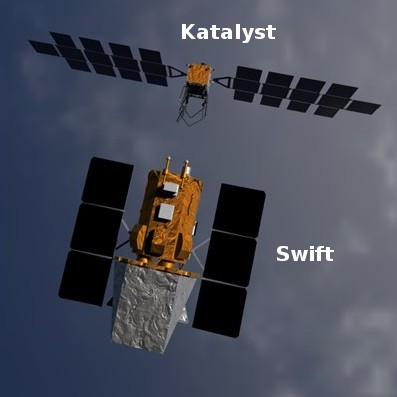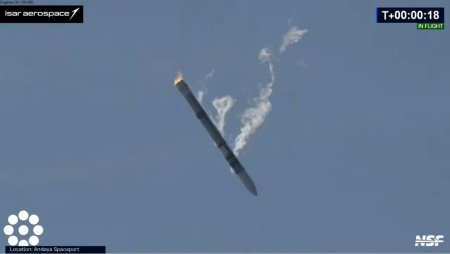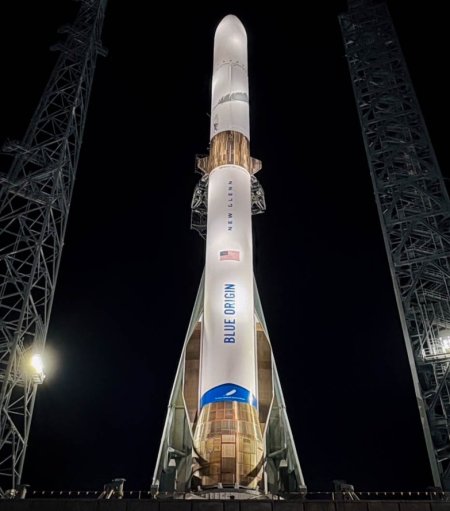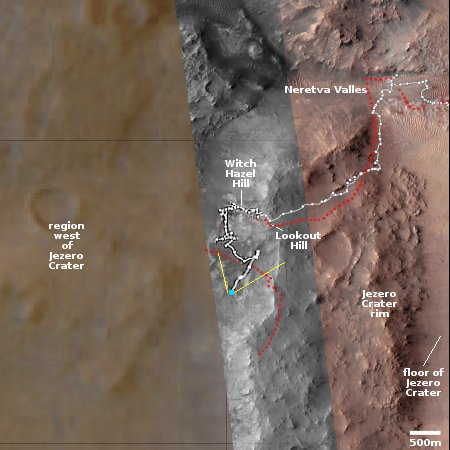Webb captures spiraling shells around massive binary star system
Using the Webb Space Telescope, astronomers have been able to produce a reasonably detailed map of the four shells that surround a triple-star system of two massive Wolf-Rayet (W-R) stars and an as-yet unseen supergiant, produced by the interaction of the winds that come off the two W-R stars combined with the interaction of the third.
The image to the right is that Webb false-color infrared image, combined with the data from the ground-based Very Large Telescope in Chile. It has been reduced to post here. The researchers have also produced a 3D simulation mapping out those shells, which you can view here.
The scientists have dubbed this system Apep after the Egyptian god of chaos. From the conclusion of the research paper [pdf]:
We imaged the colliding-wind W-R binary Apep with [Webb] and [the Very Large Telescope]. The JWST images detected four concentric dust shells with highly regular and detailed structures surrounding Apep. The mean expansion speed of the dust shells is 90 ± 4 mas yr−1 and the mean spacing between neighboring shells is 17.30″ ± 0.17″ [in degree seconds]. The shell spacing and expansion speed together suggest an orbital period of 193 ± 11 years, which is independent of uncertainties on the distance, and that the dust structure observed was produced over the past 700 years.
It is believed that Wolf-Rayet stars are primary candidates to eventually go supernova. The data for this system also suggests this system could produce a gamma ray burst as well. At present the astronomers estimate the distance to this system to be about 15,000 light years, which means such an explosion would likely poses no risk to us. It would however give scientists a great view of the event, better by many magnitudes compared to previous such explosions.
Using the Webb Space Telescope, astronomers have been able to produce a reasonably detailed map of the four shells that surround a triple-star system of two massive Wolf-Rayet (W-R) stars and an as-yet unseen supergiant, produced by the interaction of the winds that come off the two W-R stars combined with the interaction of the third.
The image to the right is that Webb false-color infrared image, combined with the data from the ground-based Very Large Telescope in Chile. It has been reduced to post here. The researchers have also produced a 3D simulation mapping out those shells, which you can view here.
The scientists have dubbed this system Apep after the Egyptian god of chaos. From the conclusion of the research paper [pdf]:
We imaged the colliding-wind W-R binary Apep with [Webb] and [the Very Large Telescope]. The JWST images detected four concentric dust shells with highly regular and detailed structures surrounding Apep. The mean expansion speed of the dust shells is 90 ± 4 mas yr−1 and the mean spacing between neighboring shells is 17.30″ ± 0.17″ [in degree seconds]. The shell spacing and expansion speed together suggest an orbital period of 193 ± 11 years, which is independent of uncertainties on the distance, and that the dust structure observed was produced over the past 700 years.
It is believed that Wolf-Rayet stars are primary candidates to eventually go supernova. The data for this system also suggests this system could produce a gamma ray burst as well. At present the astronomers estimate the distance to this system to be about 15,000 light years, which means such an explosion would likely poses no risk to us. It would however give scientists a great view of the event, better by many magnitudes compared to previous such explosions.















